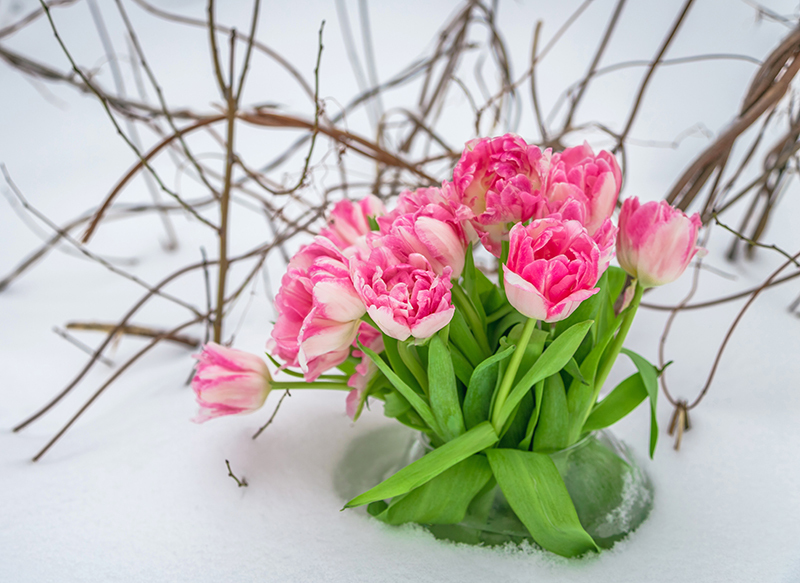Uncover the Joys of Growing Beautiful Hydrangeas
Posted on 22/08/2025
Uncover the Joys of Growing Beautiful Hydrangeas
If you've ever strolled through a summer garden and marveled at the lush, vibrant clusters of hydrangea blooms, you already know the magnetic charm of these spectacular plants. Renowned for their extravagant flower heads and a spectrum of hues, growing hydrangeas is a source of joy and pride for gardeners of all skill levels. Whether you're aiming to cultivate an enchanting border or craft captivating floral arrangements, hydrangea cultivation offers endless rewards. In this comprehensive guide, uncover the joys of growing beautiful hydrangeas, from selecting the right varieties to creative garden uses.

Why Choose Hydrangeas for Your Garden?
Hydrangeas are an excellent addition to any garden due to their:
- Versatility: Suitable for borders, hedges, or as stand-alone focal points.
- Long Bloom Period: Many hydrangeas bloom from late spring through fall.
- Color Variety: Flowers range from blue and pink to purple, white, and even green.
- Relative Ease of Care: With the right conditions, hydrangea growth is straightforward and rewarding.
Types of Hydrangeas: Finding Your Perfect Match
Before planting hydrangeas, it's important to select the right variety for your climate and aesthetic goals. The most popular types include:
- Mophead Hydrangeas (Hydrangea macrophylla): Known for their signature large, rounded blooms, available in shades of blue, pink, and purple.
- Lacecap Hydrangeas: Boasting delicate, flat flower heads surrounded by larger 'petal' flowers.
- Panicled Hydrangeas (Hydrangea paniculata): Featuring cone-shaped flower clusters often turning from creamy white to blush pink.
- Smooth Hydrangeas (Hydrangea arborescens): Favorite for their robust, naturally round blooms and hardiness.
- Oakleaf Hydrangeas (Hydrangea quercifolia): Appreciated for distinctive oak-like foliage and transitioning flowers.
- Mountain Hydrangeas: Compact and cold-resistant, ideal for smaller spaces and cool climates.
Choosing the Right Hydrangea for Your Region
Understanding your region's climate and soil is critical for successful hydrangea gardening. For colder areas, opt for mountain or smooth hydrangeas, while mophead and oakleaf hydrangeas flourish in more temperate climates. Consult your local extension office for the best hydrangea varieties in your area.
Planting Hydrangeas: Preparation and Process
When to Plant Hydrangeas
Plant hydrangeas in early spring or fall. This allows roots to establish before extreme summer heat or winter chill sets in.
Where to Plant: Finding the Ideal Spot
- Sunlight: Most hydrangeas prefer morning sun and afternoon shade. Paniculata varieties can withstand more direct sunlight.
- Soil: Well-drained but moisture-retentive soil is key. Hydrangeas dislike "wet feet" but need consistent hydration.
- Spacing: Allow enough room for mature spreading--consult variety guidelines, but generally 3-5 feet apart.
How to Plant Hydrangeas: Step-by-Step
- Dig a hole twice as wide and as deep as the root ball.
- Amend the soil with compost or organic matter.
- Place the hydrangea in the hole, making sure it sits at the same depth as its nursery pot.
- Backfill with amended soil, gently firming it down around the roots.
- Water thoroughly, ensuring the soil is moist but not soggy.
- Apply a 2-3 inch mulch layer to retain moisture and suppress weeds.
Hydrangea Care: Nurturing Gorgeous Blooms
Watering Your Hydrangeas
- Hydrangeas love deep, consistent watering--about 1 inch per week during the growing season.
- Water early in the day to allow leaves to dry, preventing fungal diseases.
Fertilizing for Vibrant Blooms
- Apply a balanced, slow-release fertilizer in early spring.
- Over-fertilizing can result in lush foliage at the expense of flowers, so follow package instructions carefully.
Pruning Hydrangeas: Timing Matters
Effective pruning can make or break the beauty of your hydrangea display. Different types of hydrangeas have individual pruning needs:
- Mophead and Lacecap: Prune right after blooming, as they flower on old wood. Remove dead stems and shape as needed.
- Panicled and Smooth: Prune in late winter or early spring before growth begins; they bloom on new wood.
- Oakleaf: Light pruning post-bloom; avoid heavy cuts which limit the next season's flowers.
Changing Hydrangea Flower Color: The Big Secret
Did you know hydrangea flowers can change color based on soil conditions? Particularly in Hydrangea macrophylla:
- Acidic soil (pH below 6): Produces blue blooms. Add aluminum sulfate to increase acidity.
- Alkaline soil (pH above 7): Produces pink blooms. Add lime to alkalize the soil.
This magical transformation brings another layer of joy to hydrangea gardening. Test your soil and adjust as desired, while keeping in mind changes occur gradually over several months.
Common Hydrangea Problems and Solutions
Pest Prevention and Management
- Aphids and Spider Mites: Wash off with strong water spray or treat with horticultural soap.
- Slugs and Snails: Handpick or set up humane traps; copper tape may help.
- Deer and Rabbits: Use repellents or fencing to protect young plants.
Common Diseases
- Powdery Mildew: Provide good air circulation and avoid overhead watering.
- Leaf spot: Remove affected leaves and apply a fungicide if needed.
Tip: Healthy, robust plants are naturally more resistant to diseases and pests. Proper watering, feeding, and spacing are your best defense!
Creative Ways to Use Hydrangeas in Your Garden
- Foundation Plants: Hydrangeas make stately, lush additions to front yard borders and under windows.
- Privacy Screens: Clustered hydrangea shrubs create natural partitions without the need for unsightly fencing.
- Mixed Flower Beds: Combine with roses, hostas, or ornamental grasses for eye-catching contrast.
- Cut Flowers: Fresh-cut hydrangeas last for days in a vase, bringing the garden inside.
- Dried Arrangements: Hydrangea blossoms dry beautifully and are perfect for long-lasting home decor.
Hydrangea Lore: Fun Facts and Folklore
- Symbolism: In many cultures, hydrangeas symbolize gratitude, abundance, and heartfelt emotions.
- Longevity: With minimal effort, hydrangeas can thrive and bloom for decades.
- Pollinator Friendly: Hydrangeas provide essential nectar for bees, butterflies, and other pollinators.
- Color Inspiration: The ability to influence bloom color adds an extra layer of artistry to gardening.
Hydrangea Maintenance Through the Seasons
Spring
- Check for winter damage and remove dead wood.
- Apply balanced fertilizer and fresh mulch.
- Monitor soil moisture as growth resumes.
Summer
- Water regularly, especially in hot weather.
- Deadhead spent blooms to encourage continued flowering.
Fall
- Reduce watering as temperatures cool.
- Leave flower heads for winter interest or wildlife.
- Add an extra layer of mulch if winters are severe.
Winter
- Protect young or tender hydrangeas with burlap or frost cloth in very cold regions.
- Avoid pruning until the right season for your variety.
Propagating Hydrangeas: Sharing the Beauty
One of the most satisfying joys of growing hydrangeas is sharing them with friends and family. Hydrangeas are remarkably easy to propagate:
- Take Cuttings: In early summer, snip a healthy, non-flowering stem about 5-6 inches long.
- Remove lower leaves and dip the cut end in rooting hormone.
- Plant in moistened potting mix in a bright, indirect light location.
- Keep soil damp and roots should develop within 3-4 weeks.
Alternatively, hydrangeas can be divided in early spring or fall for gifting or spreading around the garden.

Frequently Asked Questions About Growing Hydrangeas
Why aren't my hydrangeas blooming?
Improper pruning is the most common cause. Remember, some hydrangeas bloom on old wood, others on new wood. Severe cold or over-fertilizing can also hinder flowering.
Can hydrangeas survive in pots?
Absolutely! Dwarf varieties are well-suited to containers. Ensure proper drainage and winter protection for potted hydrangeas.
Are hydrangeas toxic?
Parts of hydrangeas are mildly toxic if ingested by humans and pets. Plant with care in gardens accessible to children and animals.
Experience the Year-Round Joy of Your Hydrangea Garden
Whether you're captivated by the romantic charm of mopheads or the rugged grace of oakleafs, growing hydrangeas is an endlessly rewarding pursuit. Their resilience, adaptability, and breathtaking beauty make them a favorite among gardeners worldwide. With the insights shared here, you're equipped to nurture thriving hydrangea blooms and enjoy a vibrant, colorful display that evolves all season long.
Ready to transform your landscape? Uncover the joys of growing beautiful hydrangeas in your garden, and watch as your outdoor space comes alive with color, fragrance, and natural wonder!
Happy planting!
Latest Posts
Neighborhood Spotlight: Flowers for Every Occasion in [INSERT BOROUGH/POSTCODE]
Send Sympathy Flowers in [AREA]: Trusted Local Options
Poinsettia Longevity Hacks for a Festive Home






